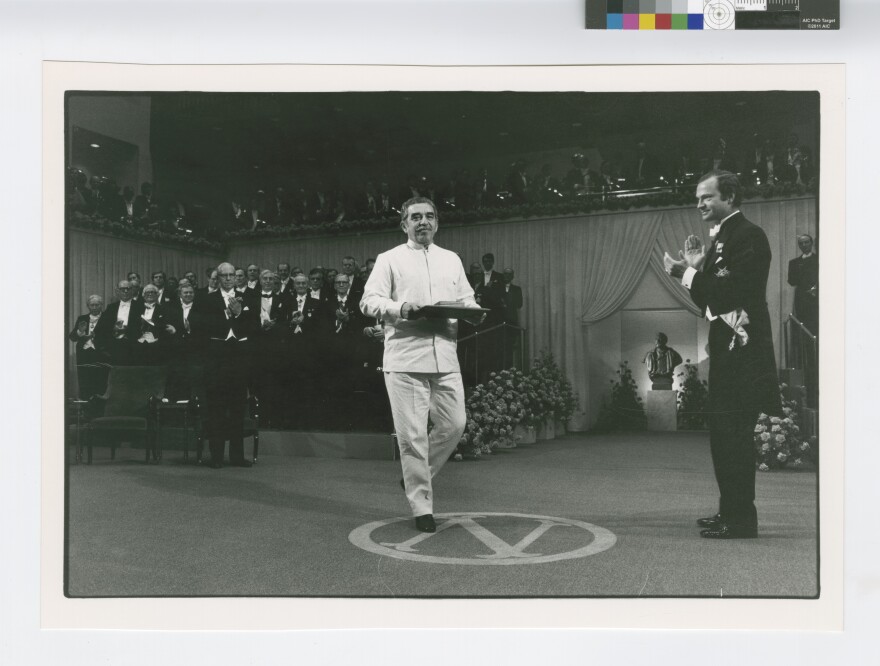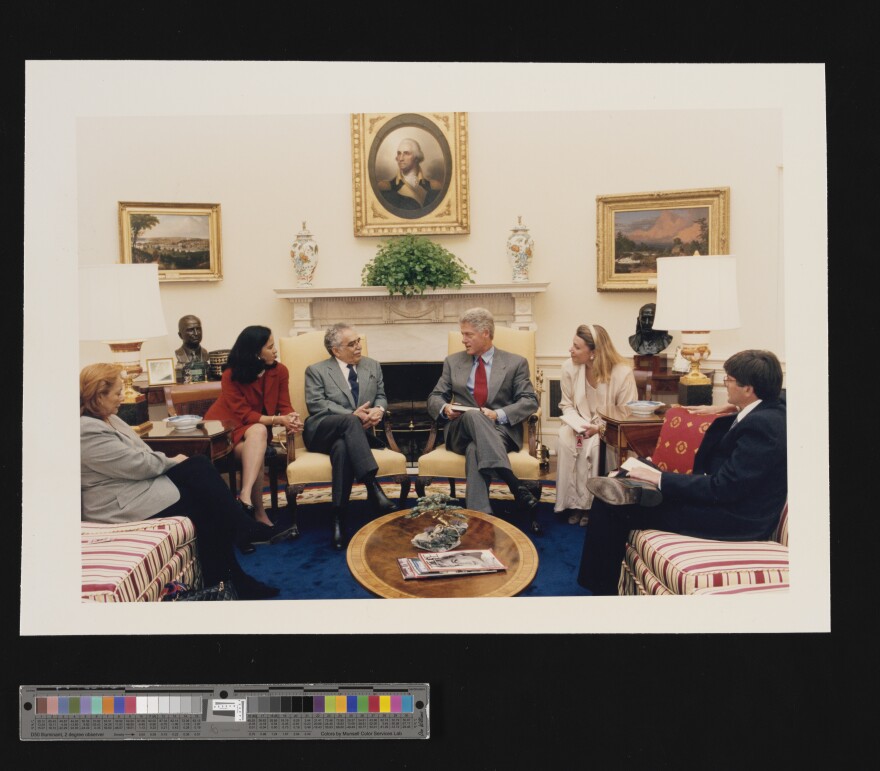“Ultimately, literature is nothing but carpentry,” Gabriel García Márquez once told an interviewer.
The author's archives are proof of this belief. He pored over his manuscripts, marking typewritten pages with red pen, cutting up strips of paper to cover sentences he no longer wanted and replacing them with new ones.
From Saturday through July 19, people can see his process up close at the latest exhibit at the Harry Ransom Center, Gabriel García Márquez: The Making of a Global Writer. Through original works and photographs, the exhibit tells the story of García Márquez’s life from a shy boy in Colombia to a global literary star.

“I think that the philosophy of the Ransom Center is to bring visitors a deep understanding of the creative process behind the making of art and literature,” says curator Álvaro Santana-Acuña, whose book Ascent to Glory: How One Hundred Years of Solitude Was Written and Became a Global Classic is out this summer. “That’s also my philosophy with this exhibition: to really bring to people’s attention the different layers that go into the making of a writer.”
Most of the items in the exhibit come from the Harry Ransom Center, which acquired García Marquez’s personal archives after his death in 2014. The center opened the archive for research in 2015 and digitized thousands of materials in 2017.
“This is the first major exhibition of García Márquez’s work in life using his personal archives,” Santana-Acuña says. “So there are things that even García Márquez scholars have never seen before.”
García Márquez spent nearly 20 years trying to become a full-time fiction writer. He worked as a journalist and published books and short stories through small presses but wasn’t well-known beyond his own literary circles. That all changed in 1967 with the publication of One Hundred Years of Solitude. The novel propelled him to international fame, and he went on to receive the Nobel Prize in literature in 1982.

The bilingual exhibit comprises some 300 items. It includes everything from his typewriter and manuscripts to a phone number viewers can call to hear García Márquez read the first chapter of One Hundred Years of Solitude in Spanish. The exhibition features original pages and galleys of writers who influenced him, like James Joyce, Virginia Woolf and William Faulker, as well as his correspondences with world leaders like Fidel Castro. It explores his life as not only a novelist, but as a journalist, scriptwriter and political influencer.
Santana-Acuña describes García Márquez as a perfectionist – a quality that paid off.
“Talent without discipline is not going to blossom,” he says. “I think that the manuscripts show that he was obsessed with writing outstanding prose to the point that if he needed to write 18 drafts and start all over again, he would do that, and he did that.”
Got a tip? Email Marisa Charpentier at mcharpentier@kut.org. Follow her @marisacharp.
If you found the reporting above valuable, please consider making a donation to support it. Your gift pays for everything you find on KUT.org. Thanks for donating today.




